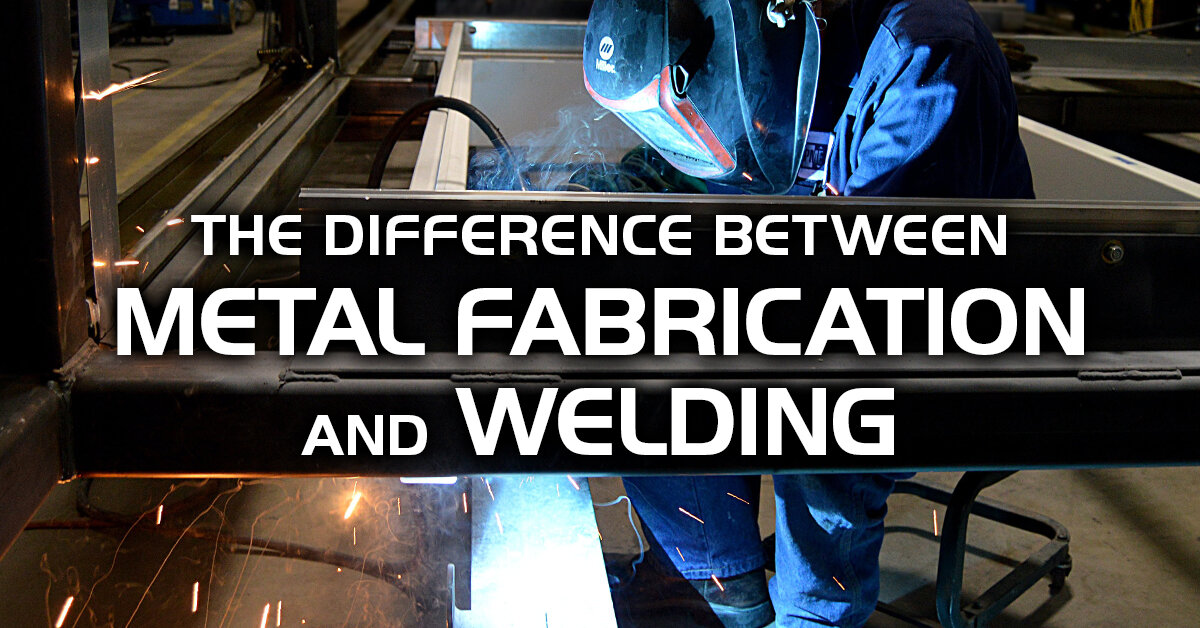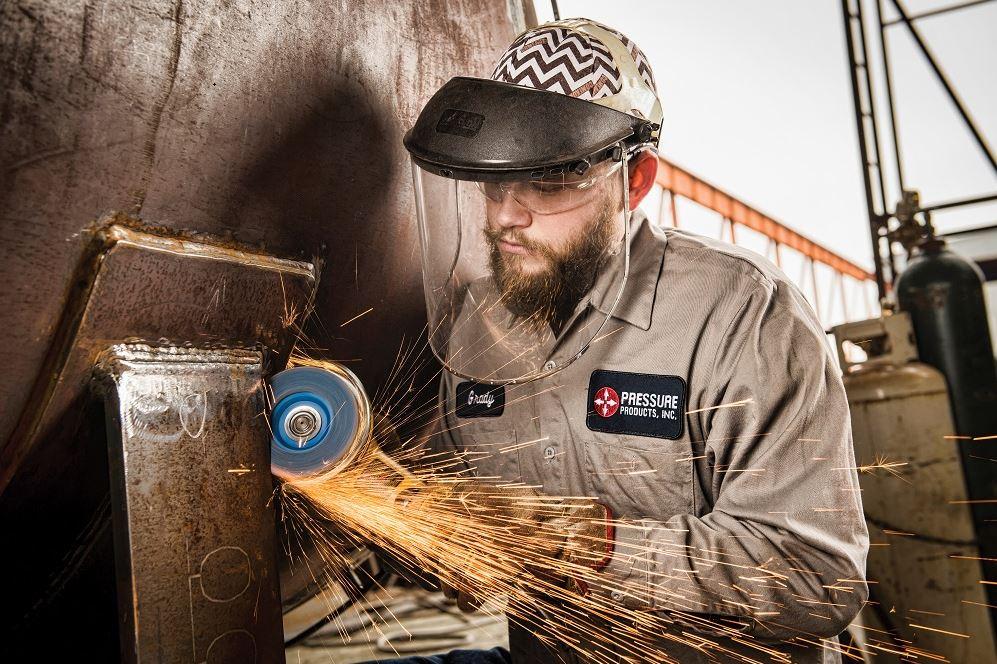Everything about Welding: Trick Insights Into Techniques and Ideal Practices for Success
Welding incorporates a range of methods, each suited for certain materials and applications. Recognizing these methods, such as GMAW, SMAW, and TIG, is essential for achieving optimal results. The best devices and safety methods can not be overlooked. As prep work and troubleshooting play vital roles in the welding procedure, mastering these aspects can greatly enhance the high quality of the end product. What are the vital variables that guarantee a successful weld?
Understanding Various Welding Methods
Welding techniques encompass a range of techniques, each suited to details applications and products. Amongst the most usual strategies are Gas Metal Arc Welding (GMAW), Protected Metal Arc Welding (SMAW), and Tungsten Inert Gas Welding (TIG) GMAW, additionally called MIG welding, is prominent for its rate and flexibility, making it suitable for thin materials. SMAW, or stick welding, is preferred for its simplicity and effectiveness in outdoor settings, specifically with thicker metals. TIG welding offers accuracy and control, making it suitable for intricate job and non-ferrous metals (Montana Mobile Welding and Repair Belgrade Fabrication). Each strategy has its one-of-a-kind advantages and considerations, permitting welders to pick the very best technique based on the job's demands, product type, and preferred outcomes. Understanding these strategies is essential for successful welding
Vital Welding Equipment and Devices
While numerous welding techniques require particular skills, the ideal tools and devices are just as necessary for accomplishing top quality outcomes. Important welding devices consists of welding machines, which differ relying on the strategy-- such as MIG, TIG, or stick welding. Safety gear, including gloves, headgears, and aprons, guarantees safety and convenience throughout the process. In enhancement, clamps and components aid secure products in position, making certain precision in welds. Consumables like welding poles, cord, and securing gas are additionally essential elements that affect the top quality of the weld. Devices such as grinders and cutters promote surface preparation and post-weld completing, contributing to a specialist result. Spending in high-grade devices inevitably improves the performance and efficiency of welding jobs.
Safety And Security Practices in Welding
Correct security methods are necessary in the welding industry to shield workers from potential threats. Welders need to put on suitable individual protective devices (PPE), consisting of safety helmets with proper shading, gloves, and flame-resistant clothes. Appropriate air flow is vital to minimize exposure to harmful fumes and gases generated during the welding procedure. Additionally, employees must be educated in the appropriate handling of welding equipment to stop mishaps. Fire precaution, such as maintaining flammable products far from the welding location and having fire extinguishers readily offered, are essential. Normal examinations of tools and workspaces can help determine possible risks prior to they lead to mishaps. By sticking to these security practices, welders can produce a safer working atmosphere and reduce risks connected with their profession.
Preparing Materials for Welding
Preparing materials for welding is an important action that greatly affects the high quality and integrity of the end product (Welding). Correct preparation involves cleaning the surfaces to get rid of pollutants such as oil, dust, and rust, which can endanger the weld. Strategies such as grinding, fining sand, or making use of solvents are typically utilized to attain a clean surface area. Additionally, making certain that the products mesh well is essential; spaces can lead to weak welds. It's additionally essential to consider the placement and positioning of the components, as this will certainly affect the ease of welding and the final end result. Choosing the appropriate filler product and making certain compatibility with the base steels is crucial for accomplishing solid, durable welds.
Tips for Getting High-Quality Welds
Attaining high-quality welds needs interest to information and adherence to ideal practices throughout the welding process. Correct joint preparation is essential, making sure surface areas are clean and cost-free from impurities. Picking the suitable filler product and welding strategy based upon the base metals is crucial for ideal bonding. Keeping consistent travel rate and angle while welding can advertise and prevent issues uniformity. Furthermore, managing warm input is crucial; too much warmth can lead to warping and deteriorated joints. If necessary, consistently evaluating the welds throughout the process permits for prompt modifications. Utilizing ideal post-weld treatments, such as cleansing and anxiety relief, can boost the sturdiness and stability of the weld, eventually making certain a successful outcome.
Troubleshooting Usual Welding Issues
Welding frequently offers challenges that can affect the high quality and integrity of the end product. Common concerns such as porosity, inconsistent weld grains, and getting too hot can develop, each needing particular fixing strategies. Recognizing these troubles is important for welders to improve their skills and attain excellent outcomes.
Porosity Problems Clarified
Although porosity can often be overlooked, it continues to be a critical concern in welding that can jeopardize the integrity of a finished item. Porosity refers to the presence of small gas pockets within the weld grain, which can weaken the joint and lead to early failing. This trouble usually emerges from impurities, moisture, or improper securing gas coverage during the welding procedure. To mitigate porosity, welders should confirm that the base materials are dry and tidy, use proper securing gases, and maintain constant welding specifications. Routinely evaluating the equipment and environment can likewise assist identify prospective issues before they show up in the weld. Dealing with porosity successfully is essential for attaining solid, long lasting welds that fulfill top quality criteria.

Irregular Weld Beans
Irregular weld grains can greatly influence the top quality and toughness of a completed item. Various factors add to this concern, including inappropriate travel speed, inaccurate amperage setups, and inconsistent electrode angles. When the welder relocates as well promptly, a bead might appear narrow and lack infiltration, while moving also slowly can trigger excessive build-up. Additionally, making use of the wrong amperage can cause either undercutting or extreme address spatter, both of which concession weld stability. The welder's method, such as inconsistent torch activity, can also cause uneven grain look. To minimize these issues, welders ought to focus on keeping stable, regulated movements and guaranteeing correct tools setups to accomplish uniformity in their welds. Uniformity is vital to attaining strong and reputable welds.
Overheating and Bending Issues
Extreme warmth during the welding process can cause significant overheating and buckling problems, impacting the structural honesty of the work surface. These problems frequently materialize as distortion, which can compromise alignment and fit-up, making more setting up challenging. Variables adding to overheating include the option of welding parameters, such as voltage and take a trip rate, in addition to the kind of product being welded. To alleviate these issues, welders should keep constant travel rate and proper warmth input while monitoring the work surface temperature level. In addition, pre-heating or post-weld warmth treatment can assist minimize tensions triggered by quick air conditioning - Montana Mobile Welding and Repair Belgrade. Regular assessment and adherence to best methods are necessary in avoiding getting too hot and guaranteeing the longevity and dependability of bonded frameworks
Regularly Asked Inquiries
What Are the Job Opportunities in the Welding Industry?
The welding market supplies varied career opportunities, consisting of positions as welders, educators, engineers, and assessors. Professionals can work in manufacturing, construction, aerospace, and auto sectors, taking advantage of solid need and affordable wages in various functions.
Just How Can I Boost My Welding Speed Without Giving Up Quality?
To boost welding speed without sacrificing high quality, one should practice reliable methods, keep equipment, optimize settings, and boost hand-eye coordination. Regular training and looking for comments can likewise significantly add to accomplishing much faster, high-grade welds.
What Qualifications Are Offered for Welders?
Various accreditations exist for welders, consisting of those from the American Welding Society (AWS), the National Center for Construction Education And Learning and Research Study (NCCER), and numerous industry-specific companies. These credentials enhance employability and show skill proficiency.
How Does Welding Impact the Characteristics of Metals?
Welding affects the residential or commercial properties of steels by modifying their microstructure, which can bring about modifications in firmness, stamina, and ductility. Warmth input and click over here now cooling rates throughout the procedure significantly impact these material features.
Can I Weld Dissimilar Metals Together?
